 |
 |
| |
|
| |
|
|
| |
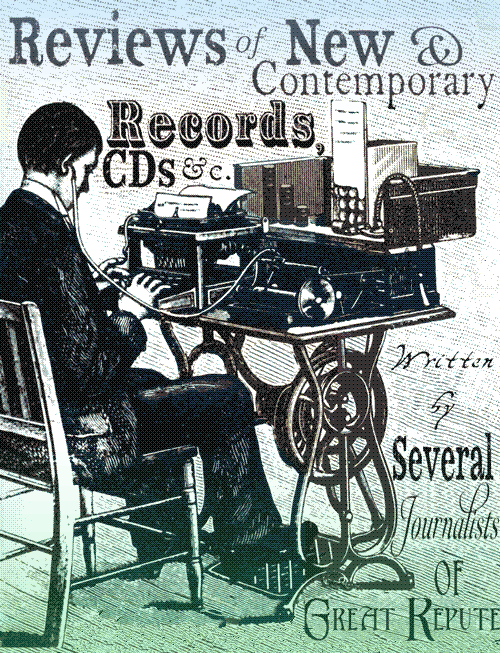 |
|
| = May 2012 = |
|
|
| Wooden Wand & the Briarwood Virgins |
| Stephen O'Malley & Steve Noble |
| The Move |
| Jim Johnston |
| Gray Field Recordings |
| Dead Sea Apes |
| Evening Fires |
| Brother Ong |
| Sujo |
| |
| |
| |
| |
| |
| |
| |
| |
| |
| |
| |
| |
| |
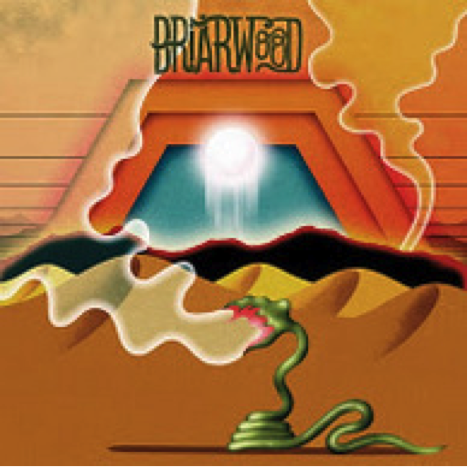
Home |
WOODEN WAND & THE BRIARWOOD VIRGINS – BRIARWOOD (CD plus free MP3, LP plus free MP3 and Download from Fire Records www.firerecords.com )
For anyone who requires an introduction to James Jackson Toth, aka Wooden Wand, it may suffice to know that as a standard bearer of wonderfully skewed Americana he has under various guises been responsible for what must be getting on for a half century of releases on what seems like almost as many labels. Prolific with a large font capital P, his output invariably delights and occasionally confounds. Perversely (typically perhaps) Briarwood manages both.
The first thing that strikes you on listening end-to-end is that this is about the closest that Toth has sailed to the mainstream. The darkly idiosyncratic campfire folk that marked out 2010’s Michael Gira-produced Death Seat as one of that year’s best albums in its class, for example, is pretty conspicuous by its absence. Of the nine cuts, only the impressive “Hotel Stationery” evokes the Wooden Wand at its brooding, suthurn gothic best, an intense slow burner that will appeal to fans of Lynyrd Skynyrd’s more restrained moments as well as those familiar with past oeuvre.
Elsewhere this is proficient enough if fairly straight-bat alt-country fare that mines a lot of traditional subject matter, drink, despair, dames, penury, fall and redemption, they’re all present and correct here, folks. The overall feel is one of accessibility and, while largely atypical of the Toth canon, it may well be a good entry point for the curious, those who like the idea of alt-country better than its execution as well as fans of Uncle Tupelo (just listen to “Scorpion Glow” if you will) Whiskeytown, Drive By Truckers and their ilk. There’s even echoes of The Band in here (not particularly my cuppa tea but sure to appeal to a fairly wide constituency).
All in all, then, there’s little trace of the sparse freak-folk on which Toth cut his teeth and which still permeates recent releases and which is a bit of a shame. Whilst Briarwood still beats the hell out of 80% of what the Americana industry churns out each year and is by no means a turkey, one hopes that Toth will at some point stray off the beaten track and return to those old quirky backwoods one more time. (Ian Fraser) |
| |
|
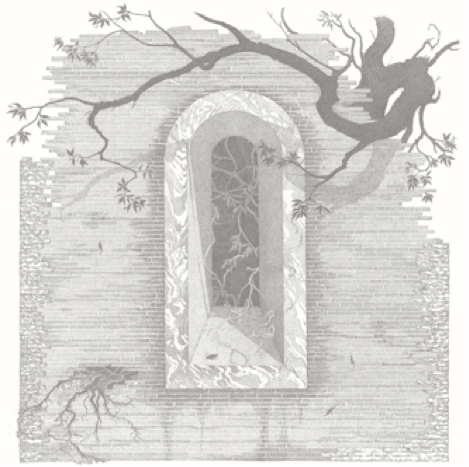
Home |
STEPHEN O’MALLEY AND STEVE NOBLE – ST FRANCIS DUO (Double LP/CD/Download from Bo’Weavil recordings www.boweavilrecordings.com )
With a pedigree that boasts Aethnor and Sunn0))) you might easily assume that Steve Noble and Stephen O’Malley’s sonic collaboration is as far removed as is inhumanly possible from the sanitised aural detritus of Glee or whatever else happens to be poisoning our collective cultural psyche at this time. Well of course you’d be right. St Francis Duo is the result of two nights at the Cafe Oto in London, yielding four violently experimental pieces featuring just drums and guitar. One thing’s for certain, Noble and O’Malley are unlike any other strings and sticks duo I’ve encountered. They don’t have the taught, anaerobic urgency of the Minuteman, or the pop hooks of White Stripes. There isn’t the radio-friendly blues of Black Keys or the outright doom-laden density of Om or for that matter Sunn0)). Perversely, slabs of it remind me of Eric Dolphy’s free jazz anti-classic “Out to Lunch”, particularly during the searching interludes when percussion is to the fore, or at least those parts that Noble isn’t trying to nail into the floor. Track 1 (I’m not aware of any titles) fires off as brutally as a blitzkrieg re-enactment before gradually retreating into a dark and dangerous place where you wouldn’t want to put any part of you in case it was no longer attached when you pulled it back. Thereafter the cacophony ebbs and flows between ferocious shredding, avant-garde plinking and plonking, Dylan Carlsson style desert reverb and back again. The three other pieces pretty much follow suit and there isn’t much to distinguish between them either in terms of formula or quality, You won’t be humming any of it on the bus but you may well carry bits of it around in your head for some time, whether you want to or not. As the storm crow flies this is better by a country mile than Sunn0)), of whom I have never really seen the point. As a fusion experiment in free jazz/doom metal, well it may have just helped cattle-prod a new sub-genre into being. (Ian Fraser) |
| |
|
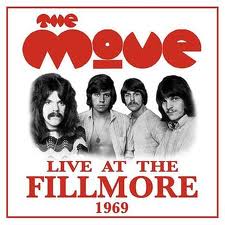
Home |
THE MOVE - LIVE AT THE FILLMORE 1969
(2 CD set, Right Recordings)
This crappy west coast hippie scene is becoming quite a drag
It seems that all my freaky clothes are turning into rag
(‘Vote for Me’ – Roy Wood, 1967)
Back in 1968 I didn’t know that Birmingham quintet, The Move and their original manager Tony Secunda had knowingly exploited all the trimmings of the psychedelic scene to great advantage and that in reality, most of the band was quite as conservative as my own family was. In my young mind, they simply looked the part. Glowering Trevor Burton with his iron cross and eyes like saucers, Ace Kefford, the singing skull, and Roy Wood, freakier-looking than the rest of the band put together! They’d had a series of top 20 hits by then but somehow had still managed to cross over into the more underground scene.
Of course I’d been aware of them and intrigued since ‘Night of Fear’ burst on to the airwaves of Radio Caroline North in January 1967 but it wasn’t till a year or so later that they exploded centre stage into my dumb school boy life. The Move entered my existence at just the right time, grabbed hold of my still-to-be-formed senses and changed the course of everything for me. By then I was trying to figure out some way of gaining admission into the enclaves of flower power and the longhair revolution happening all around me but it wasn’t easy coming from Squares Ville UK.
There had to be some way in! And there was…
The keys to that magic kingdom turned out to be a 7” slab of wax I purchased that July. Just as the school summer holidays were beginning, I went into the local record shop, the Disc Centre in Lytham, and came out with a 5-track EP live at the Marquee Club in London, ‘Something Else from the Move’ on the Regal Zonophone label. To say it blew my tiny mind, is an understatement of epic proportions – I spent the next few weeks playing it over and over again on my parents’ radiogram absorbing not just the music but the whole look of the group and the vibe. Ace wasn’t on the back sleeve photo and it would be a while before I learned why he wasn’t there – and another 40 years before I discovered that due to technical problems with the tapes, the Marquee disc was actually a composite of two separate performance (one in February 68 done whilst Kefford was still there and one recorded in May after he quit and Burton took over the bass role). The EP contained the most exciting pop music I’d ever heard but more importantly it was a portal into another zone, where I was more than ready and willing to go. I was familiar with the Byrds (a cover of whose’ So You Want to be A Rock and Roll Star’ kicked the set off) but I wasn’t aware of Love or Spooky Tooth, covers by whom were also integral components of this wondrous 7”.
I was a quick learner and soon wanted more. By mid-August, the band’s eponymous debut LP was on its way home. Inside that cool Fool cover, in amongst some fabulous Roy Wood originals like ‘Yellow Rainbow’ and ‘Cherry Blossom Clinic’, there was a storming take on Miller- Stevenson’s ‘Hey Grandma’ igniting a life-long love affair with their West Coast band, Moby Grape. As some wag later put it, the Move were Moby Grape with Brummie accents (I’ll leave you to work out why!).
I was hooked and just couldn’t understand why ‘Wild Tiger Woman’, the Move’s fiercely rocking follow up 45 to ‘Fire Brigade’ that September failed to chart. Still one of my fave Move songs, I can now see why it stiffed, unable to curry favour with the teenybopper contingent of their following or DJs like Tony Blackburn who’d loved the Move’s pop ventures like ‘Flowers in the Rain’ and had chosen ‘Flowers’ as the song that opened Radio 1. ‘Tiger Woman’ had risque lyrics, brutal riffs, screaming guitar lines and rollicking piano from Nicky Hopkins! So it was no surprise that its follow-up, yet another gem from the pen of Roy Wood, was the far more accessible ‘Blackberry Way’, which would take the band to the coveted no 1 spot and in its commercial wake see Trevor Burton leave the band only months after their magnificent showcase on BBC 2’s Colour Me Pop.
In spring 1969, Rick Price replaced Burton and singer Carl Wayne was toying with bringing a more MOR flavour to the group’s repertoire with songs penned not by Wood but by Dave Morgan. With a new manager, the Move was also mining the lucrative cabaret circuit!
‘I hated the cabaret thing, and so did Roy but the money was really good and we were both getting married in 1970, so the money really helped’, drummer Bev Bevan now recalls, ’It was mainly Carl, and Rick Price was happy to do it too ,but Carl...you can hear him doing his front man rock and roll singer brilliantly on the live album and then we get back to England and then he decides he wants to be Engelbert Humperdink!’
It seemed a far cry from the Roundhouse, where onstage Wayne had taken an axe to a car or the Grove, where the band had pelted the audience with pieces of raw meat! With the summer release of the ‘Curly’ 45, it looked liked curtains for the rock group I had loved a year before. Where was the punk rock sensibility of ‘Something Else’ or the abandoned guitar freak-ery of ‘Sunshine Help Me’? But as this glorious two CD set under scrutiny here, reveals, as a live band the Move was still one to be reckoned with….and then some.
There had been talk of an American tour for years but in October 1969 the Move finally planted its feet firmly on the Eastern sea board with dates scheduled in New York, the Mid West and California. The band had risen to the occasion and decided to revamp its repertoire accordingly. The pop elements and the ‘hits’ were out – the Move honed an uncompromising set of choice covers (lifted from import albums Wayne had bought at Birmingham’s infamous Diskery) and Wood numbers that lent themselves to a hard rock and psychedelic interpretation. The quartet was ready to do battle with the American Underground!
They set off across country aided and abetted by former Hendrix roadie, John ‘Upsy’ Downing. First stop was Russ Gibb’s legendary Grande Ballroom in Detroit where they shared a bill with the (still Psychedelic) Stooges! I asked Bev about the Michigan dates and drew a blank – he couldn’t remember Iggy and Co and observes, ‘we were tired from the travelling, I think we went off to bed!’
The Move then set off for the West Coast, the source of many of their key musical influences. This was after all the home of the Beach Boys, the Byrds and Love. Would they find it quite as tawdry and disappointing as Wood had suggested in his lost-classic song, ‘Vote for Me’? Arriving in LA the group played a residency at the infamous Whisky A GoGo. The night before they played, they checked in at the infamous Hyatt House, went to the A&M office (their US record label), where they met the newly signed Carpenters and then checked the club out. Chaka Kahn & Rufus were playing and Bev was very taken with them. Chaka and the boys returned the favour the next night and checked out the English rockers, also in the audience were Jim Morrison and the Doors, and members of the Tijuana Brass!
The Move may not have embraced the more philosophical elements of the hippie scene but the band liked the Californian vibe. Bevan: ‘We went up into the hills and Joni Mitchell was there. She was the first American rock and roller we’d met and she was very nice. It was that time, everybody was stoned and it really was love, love, love and we kind of got into the whole thing with kaftans and stuff(laughs)’
The group then headed up the coast for San Francisco and Bill Graham’s Fillmore West where they would share a bill with another influence, Little Richard and label mates, Joe Cocker & the Grease Band.
What did the group think about playing such a famous venue? Bevan recalls, ‘Once we played the first song and it had gone down well, we relaxed. We were nervous. We were in front of a crowd who’d seen everybody, they’d seen every band there is. By doing the songs that were familiar [such as the Nazz covers, see below], and giving them such a heavy stance, that worked for them’.
Though never intended for an official release, the Move’s Fillmore sets were (less than perfectly) recorded at the time and lay in Charlie Wayne’s archive over the intervening years until the technology finally caught up and they could be restored and digitised accordingly. Sadly Wayne died in 2004 but thanks to the dedication of his widow Sue, the recordings have been finally brought up to snuff and show that Carl was right when he described he and his musical mates as a ’formidable live band’.
Disc 1 kicks off with a raunchy rendition of the Nazz’s ‘Open My Eyes’ – one of my all-time favourite cuts from the Nuggets compilation and a perfect vehicle for the Move. The Nazz were huge Anglophiles and later, their leader Todd Rundgren would return the complement and record a version of ‘Do Ya’.
As fellow scribe, David Biasotti observes, this double set is in effect a live rendition of Shazam, the Move’s sophomore album, which came out a few months later. ‘Open My Eyes’ is followed up with no less than three cuts from that LP.
‘Don’t Make My Baby Blue’ – the Brecht/Well song later covered by Frankie Laine whose 1963 single Bevan owned, has the Move sounding at its grungiest, heaviest best and is a portent of things to come in the ‘Brontosaurus’ era! It showcases just how adept Wayne was at handling hard rock. A shame nobody mentions him in the same breath as Paul Rogers or Percy Plant, whom he could easily out-sing!
What’s especially impressive about the next cut, ‘Cherry Blossom Clinic Revisited’ is how vocally rich the band was throughout its career. Stripped off its studio orchestrations, here Wayne and Wood imitate the sounds of the strings and brass to stunning effect.
The concept of the Move covering a Tom Paxton song is mind-boggling, especially one of the American folkie’s best-loved standards but on ‘The Last Thing On My Mind’, in true Move style, they seize victory from the fangs of defeat with a hugely lyrical performance, that shimmers with a golden West Coast aura. The song is given a gorgeous Byrdsian feel by Wood’s soaring, raga-esque electric Fender 12-string guitar and stamped with another authoritative vocal from Wayne, whilst the three-part vocal harmonies on the chorus are the icing on the cake!
Disc 1 ends with an extended take of the band’s second 45, ‘I Can Hear the Grass Grow’, one of Wood’s best and also one that captured the original Move at the absolute peak of its powers. Here they segue from the hit into a medley of ‘Born to Be Wild’, ‘Peter Gunn’ and even the refrain from ‘Night of Fear’ before going back into the song proper.
Good as the first disc is, it’s the second disc that brings home the bacon.
First up is their cover of Ars Nova’s ‘Fields of People’. Some claim that the Move’s version on Shazam is vastly inferior to the American band’s’ original but whatever your view, you can’t ignore the tour de force instrumental, extended play out here, where Wood employs his banjar,a weird stringed hybrid to create a mesmerising eastern mantra with Bevan’s thunderous drumming giving it an added tabla-like edge. As Archie Patterson who was at the Fillmore comments in the accompanying booklet, ‘the audience was literally transfixed’
Their take of the Goffin/King tune’ Goin’ Back’ is next , and closely follows the arrangement McGuinn & Co did on Notorious Byrd Bros. At last! This was sadly never captured on wax when Trevor Burton sang the lead vocal on it. With its gorgeous West Coast harmony vocals and sturdy musicianship, this is a very welcome addition to the Move’s official recorded output.
Yet another Shazam number, ‘Hello Susie’ follows. Pop pickers on both sides of the Big Pond would already have known this from the version the Amen Corner had taken up the charts earlier in 69. Here it gets a truly muscular work over with Wood’s slashing guitar chords and another magisterial lead vocal from Charlie, proving yet again he was one of rock’s best front men.
The live set ends with another Rundgren tune, ‘Under the Ice’, where Roy is given full reign to solo like a demon. Wood is always accorded plaudits as a composer, showman and multi-instrumentalist but never as a lead guitarist, and that’s a crying shame as his work on the Marquee set had already amply attested. On ‘Ice’ he cuts loose to devastating effect. Yes you can hear the Hendrix influences (no surprise given the close ties between both bands), but here he excels himself. His wah-wah pedal work is both breathtaking and innovative (quite as jaw-droppingly dazzling as his lap steel playing in the 70s line up of the group would be) and he whips the whole number up to a fine frenzied climax with plenty of psychedelic crescendos. A fine set closer indeed!
Sadly the Fillmore dates were not an especially happy experience. It seems as if the West Coast scene was indeed a drag after all! Rick Price had his drink spiked back stage and suffered a bad acid trip, and never much of a long haul touring band, the Move themselves suddenly felt homesick and instead of heading back to play the Fillmore East in New York, promptly flew back home the next day. ‘I think we ‘d had enough’, says Bev, ‘we’d never been away from home for three weeks before’. They never toured America as the Move again.
As someone who’s always viewed the 1969 line-up of the Move as its weakest, the live Fillmore set is a revelation and acts as the perfect bridge between the Move’s two most musically creative eras.
It’s also something of a miracle that its potency was captured for posterity given that within a couple of months of getting home, the Move changed gear.
Wayne was out and Jeff Lynne was in as the band embarked on what was for me a period of musical innovation and excitement that rivalled its 67/68 heyday.
If you already have the Move back catalogue, you’ll die for this, and if you’re wondering what all the fuss is about in the first place, then this Fillmore set is as good a place as any to discover one of the greatest British rock bands of all time.
No wonder Charlie was so proud of these recordings.
(Nigel ‘Curly’ Cross) |
| |
|
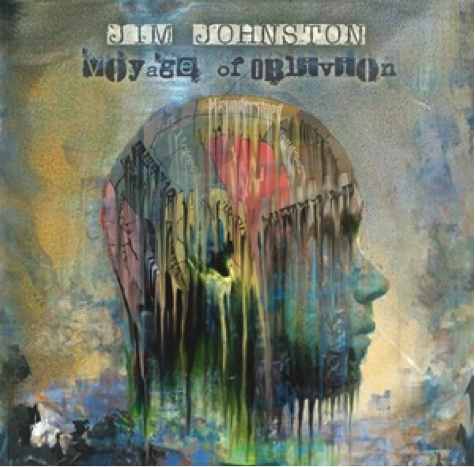
Home |
JIM JOHNSTON – VOYAGE OF OBLIVION (CD and Download from Rattlewatch Records www.rattlewatchrecords.co.uk )
Solo debutant Jim Johnston (one part of Monk of Canatella and one- time Banksy collaborator) is reputed to have recorded Voyage Of Oblivion live in just one day (we’ll forgive him the four days he took to overdub it). If that is the case then this neat and notable offering is all the more remarkable for that. Taut, clever, nicely arranged and with some nice dark undertones, Johnston and his co-conspirators Martin Dupras, Chris Thomas and Owain Coleman have served up what might, without too much fear of contradiction, be described as accomplished alt/indie rock.
“Misunderstood”, the first single drawn from the album, is a sinister showcase for Johnston’s wide range of influences from 70s classic rock (that’s Jon Lord’s organ in there, surely) through to the cod orchestration of 90s “dance” music, helped down with some crisp, understated guitar. Maybe it shouldn’t work but it does, believe me. “Tin Gods” kicks off in almost headbanging mode before lurching into a similar micro-range of styles as before, all rather angular and simultaneously playful and unsettling. “Halloween” suggests an intriguing Thom York/Karl Wallanger collaboration and is a joy, only slightly marred in the coda by guest singer Ellie Baker, so tastefully restrained in the chorus and elsewhere on the complex “Tin Gods”, who almost blows her big moment with some over-wrought and out-of-context lead vocals which might work perfectly in other settings but not here. The Auteurs-alike “The Last Pilgrim” is one of a fistful of standouts, quite exquisitely melodic but with the trademark brittle guitar, stop-start verse-to-chorus-and-back-to-the bridge links and quirky signature changes all present and correct. “Children of Chaos” is another fine example of what is clearly a Johnston brand and is a strong contender for this month’s iPod compilation along with a number of offerings here. Best of all, though are “Shaken by the Dawn”, simple, tuneful and with a gentle chorus that’s as infectious as chicken pox, and “Hitcher”, my own favourite if only for the closing instrumental - the closest thing here to a wig-out and which Stephen Malkmus fans could do far worse than to check out
You will delight and possibly drive yourself potty in trying to spot all the musical reference points yet Voyage of Oblivion sounds fresh rather than derivative. Granted at almost an hour long and for all its apparent intricacy the patterns can seem predictable in places and whilst lyrically clichéd on occasion, that’s all small beer when set aside the undoubted positives of musicianship, inventiveness and the sheer class of most of the thirteen cuts. We need more of this for our air waves, Radios 2 and 6 Music please take note and check this out, the rest of us would do well to watch the listings and future release pages and support what is a bit of an endangered species in these days of wall-to-wall weepy voiced divas and adenoidal-sounding urbanites talking over other people’s records, namely intelligent, indigenous indie music. Admit it, you’ll miss it when it’s gone. (Ian Fraser) |
| |
|
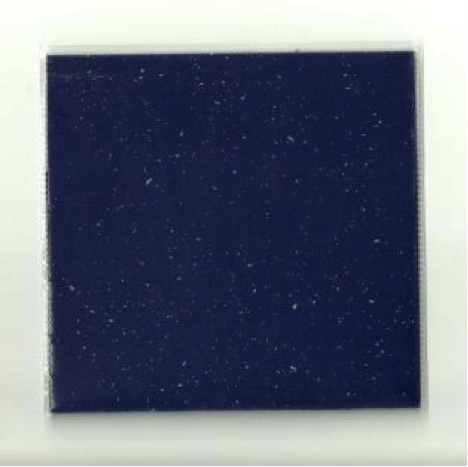
Home |
GRAY FIELD RECORDINGS – NATURE DESIRES NATURE (CD from Reverb Worship www.reverbworship.com )
We are fortunate here at the Terrascope to receive not only unfailingly interesting new material but, on more than a few occasions, work of such tender loveliness as to revitalise even desensitised antennae such as those found on either side of the head of an old heard-it-all hack and reduce him to the status of a blissed-out grinning fool. It’s pleasing to report that Nature Desires Nature is one such treasure.
Formed by Oklahoma composer and multi-instrumentalist R Loftiss, the Gray Field Recordings melds conventional instrumentation with the decidedly eccentric, in fact pretty much anything it’s possible to elicit some noise out of (rusty grinders being no more weird than spoons and washboard, surely). Aided and abetted by frequent collaborators David Salim and Justin Jones on viola and violin respectively, Loftiss’ latest release also features contributions from members of Temple Music, The Chasms and, joy of joys, Lisa from The Hausfrauen Experiement. I rest my case, ‘nuff said
Formed around spoken word narratives taken from works by Doris Lessing, Edmund Spenser and others, and interspersed with spectral and wordless vocalisation that our old friends Book of Shadows might well be proud of, Nature Desires Nature weaves in and out of your consciousness in ways that are both ethereal and grounded. It has the haunting quality, say, of Jane Weaver’s “Fallen by Watch Bird” while also likely to appeal to fans of the more bucolic and horizontal contributions to the Pink Floyd canon. In places it comes perilously – make that deliciously - close to space whispering. The only unsettling moments come during the creepy “Cherubim Wheels” and the neat little twists and turns of “A Little World/In A Field Far Away”, where things really do get...interesting, although even here the effect is atmospherically spooky, serving to draw in the listener rather than to shock or frighten.
Sublime and interesting, Nature Desire Nature will appeal to anyone with more than a passing interest in freak folk, ambient drone and left-field chamber music played by woodland elves (c’mon don’t tell me you’ve never seen ‘em). The only downside is that for now at least, this wondrous creation is in criminally short supply - there are only 51 copies available. (Ian Fraser) |
| |
|


Home |
DEAD SEA APES - LUPUS
EVENING FIRES - FLORA AND FAUNA
EVENING FIRES - AFTER THE END OF THE WORLD
BROTHER ONG - DEEP WATER CREATION
(All CDs from Deep Water www.dwacres.com)
For a good few years now, Deep Water, under the guiding hand of Kevin Moist, has been producing quality music from a variety of bands including his own Evening Fires. These four releases showcase the label perfectly and are some of the strongest albums in the catalogue.
Like the ominous premonitions of a sleeping giant, the music of Dead Sea Apes is intertwined with low end rumble and drone, with album opener “Pharmakon” setting the scene, a deep and pulsing rumble that fills the room. On the 16 minute “Knowledge and Conversation”, the band open one eye and stretch out with slow-motion precision, invoking a unsettling mood as the piece flows along, building tension and creeping under your skin, the guitar writhing through the music in a slow spiral of notes.
After the gossamer rainfall of notes that is “Still”, the band stretch out again as “Something To Do With Death” demonstrates a subtle beauty in it's opening phase, a soft and sensual wash of sound that is powerful and delicate at the same time. As the piece moves on the sounds become heavier and more urgent creating a darker feel to the music, although these phases are interspersed with the quietness of the earlier part, the track finally fading in delicate splendour.
With remarkable briefness,”Bloodknot” manages to sound as full as the other tracks in only 1 min 20 secs, a good trick if you can do it, before the band get back to stretching thing out on “Wolf of the Bees”, more blissed out drone that whispers of high magic, sounding like it was recorded in a sacred cave deep underground, just add flickering candlelight and headphones for the full effect. Finally, “Medicine Lodge” is a short meditation for electric guitar, ending a near perfect album with a beauty that the band managed to display throughout.
Beautifully realised and recorded, the latest brace of albums from Evening Fires are every bit as enjoyable as those that have come before, soaring and melodic psychedelia that seemingly goes on forever, but never too long, the players listening to each other and reacting accordingly to create some of the most elegant and free-flowing music you will hear. On “Flora and Fauna” the band get into the groove immediately as the magnificent “What Plants Crave” fills the room with sunshine, the band levitating themselves in search of the perfect chord, taking you along for the ride, all you can do is let it happen. Shimmering in a sonic haze, “... In A Sunbeam”, does what it says, a light and airy track that makes you feel better, as if you are lost in a summer meadow, this mood broken, but not shattered, by the arrival of “If We Do Not Disappear, We Don't Know What We are”, a much noisier affair, with distorted electric guitar sounding like an angry wasp heading your way. As the track moves on, this harshness begins to fade, as if the musicians are dissolving, the piece drifting into a very spacey drone that itself morphs into a fine piece of driven space rock, heavy with percussion and snaking guitar lines, ending a fine album in style.
With the sounds of gunfire, helicopters and howling winds, “After the End of the World” begins with a much darker atmosphere than the previous album as “Deserted Cities part 1” moves into action, a distorted drum pattern dominating the dark drones around it, creating a claustrophobic feel, the walls closing in around you. As the track moves on it becomes heavier and more restless, until it finally disintegrates in a cloud of bass rumble. As “Part 2” arrives, those clouds are parted, the track becoming lighter in texture, adding a softness to the music, the claustrophobic feel becoming a distant memory as the band find some harmony, although it seems that this is a fragile peace, there is still tension to be found amongst the cracks. Indeed, as the piece progresses the restlessness returns, the guitar searching through the clouds for somewhere to call home.
Clocking in at over 21 minutes, “The Sky Came Close to the Earth” begins with a free-form tumble of sounds and notes as piano, drums and saxophone jostle for position. Over the next few minutes, the instruments remember their roles, the piano discovering chords and the drums discovering rhythm, allowing the sax to become more melodic as the band settle into a jazz tinged psych groove that is summery and delightful, although this becomes more skronk-laden as it trundles on, the many moods on show creating one of the finest tracks on the two albums. To end, “Born in a River” meanders beautifully, a softly undulating ribbon of sound, that is indeed, like watching a river flow past, timeless and endlessly fascinating.
Also known as Mike Tamburo, The Music of Brother Ong is deeply reflective and positive in its energies. Played on the Shahi Baaja, a type of electric Indian zither, with voices and effects, the music has a warmth of its own, the five tracks creating a soft pool of notes that it is easy to relax in, the rippling notes dancing around your vision, flecked with light. On the third track “Sacred Pool”, the meditation seems to become much deeper, the music seemingly no longer linear as time dissolves around you, all you can do is breathe. Regaining a sense of place, “From Her Mighty Blade” is equally as wonderful, seventeen minutes of shimmering psychedelic sound, played live, as were the other tracks, demonstrating complete mastery of the musical set up used, the addition of chanted vocals only enhancing the mystery and atmosphere of the piece. To close, “Flower and Hand Ceremony” returns to the light fall of notes that characterised the earlier tracks, a gentle ripple of light and sound in perfect harmony, music for a single candle, warm and alive.
Deep Water should be justly proud of these releases, a perfect quartet of albums that are inventive, playful, varied and well worth picking up, great stuff all round. (Simon Lewis) |
| |
|
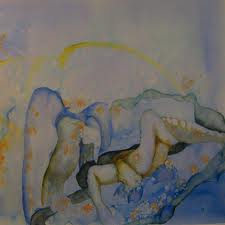
Home |
SUJO - DIASPORA
(CDR from Inam Records - inamrecs@yahoo.com)
Fresh from experimental set-ups such as Olekranon, Vopat and BobCrane (recognition for the troubled and now long gone t.v. star of "Hogan's Heroes"?) comes Sujo, yet another project from instrumentalist/electronicist and Bloomington, Indiana, resident Ryan Hubler. With the opener "Six Days", the listener is immediately knocked sideways by the sheer expansive production values on offer, in which a melange of Glenn Branca-like orchestral crescendos eventually descend into sombre loops and slowly decaying, blackened melodic fragments. Both "Tamil" and the aptly named "Threat" reveal slowly uncoiling wads of distressed electronic chaff that fans of guitar-based japanoise and those mavens of avant doom (who dare to peruse volume 13 of "The Malleus Rifficarum"), would certainly get a pleasurable kick out of. After all, Merzbow have had mentions in Kerrang(!!).
N.B. a severely limited run of 50 (!) suggests that those interested, take a punt on this pronto, if not maybe sooner. As an add-on, The self-same imprint has also released (75 copies this time...) a self-titled cdr from P.S. Stamps Back & Olekranon where dial tweaking and frantic phial-sharing from this Greco/American "near" collaboration (there are 3 solo tracks), disgorge waves of hazy test tones, forlorn satellite blips and the mating calls of various industrial appliances, which are occasionally given short shrift by bursts of implosive synthetics.
( Steve Pescott ) |
| |
|
| |
|
| |
|
| |
|
| |
|
| |
|
| |
|
| |
|
| |
|
|
 |
|

